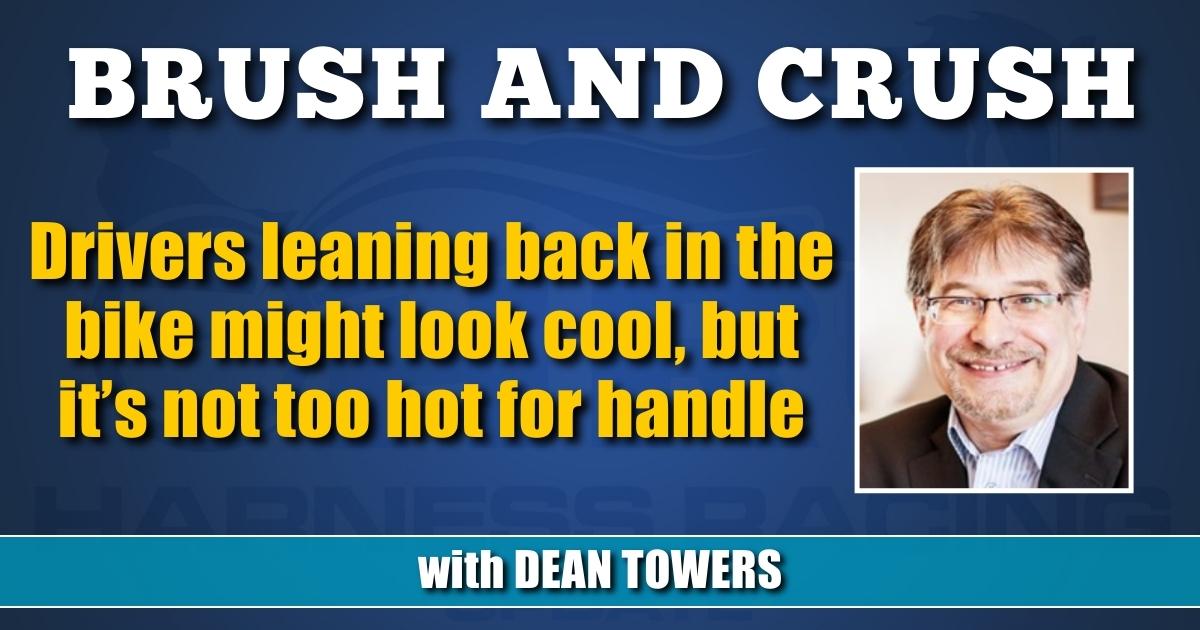
Drivers leaning back in the bike might look cool, but it’s not too hot for handle
Eliminating half the field sabotages the pari-mutuel gambling game.
by Dean Towers
John Berry, former sidekick of Gabe Prewitt on the old Pompano Park feed, wrote an interesting column recently that caused a lot of chatter on the Internet. It involved the now age-old practice of drivers leaning back in the bike.
We all know why this phenomenon hurts the sport’s presentation, and why tracks like The Meadowlands would love to outlaw it. It simply stretches the field out more front to back, and in a speed game like modern harness racing, it makes it even tougher to come from behind.
I think the underlying notion that this is detrimental to the gambler is somewhat foggy for some, so please allow me to explain my point.
A current driver posting on Facebook surmised that because the back-half of the field can be eliminated it should be something bettors like, because it’s easier to pick winners. Unfortunately, the gambling game — the one that still pays for millions upon millions of purses each year — doesn’t work like that.
This weekend you can bet on the NFL game between the Cowboys and Rams. However, because Dallas is better than Los Angeles on paper, bookies since forever have added a handicap called the point spread. In this case if you bet the Rams, you get 6.5 points.
This is not done because bookies like to make life complicated. A spread makes the betting proposition more attractive, and it allows the outcome to be paid out at minus 110 odds, which represents a takeout rate of about 4.5 per cent. It drives action, and attracting more money is how the system functions.
Pari-mutuel horse racing followed the bookies’ lead, and it has been a staple of its existence as a gambling game since before the invention of sliced bread.
Where football games have a point spread, racing has the condition book. It’s the goal of every racing secretary to card races where every horse could win. It’s one reason why claiming races are so popular with bettors; every horse tends to have a chance for all the chocolates.
Handicap races have long filled a similar need. In the 1930s, they made Phar Lap carry a proverbial refrigerator to entice betting against him. In the golden age of harness, Overtrick would be given post 8, which was something to overcome on a half-mile track like Roosevelt.
In horse racing I’d argue handicaps are even more important, because while a football game has 4.5 per cent takeout, racing bettors must overcome rates four or five times that, each and every day. It needs multiple outcomes to make it attractive.
Squeezing the number of potential results in a race (as this driver suggested), not only makes the game less enjoyable to watch, but it also increases takeout to super-usurious rates that few would want to play. Gambling itself is a remarkably simple concept. The game needs to be fair, provide some sort of edge, and it needs to be presented in a way where it’s worth someone’s time (never needed more in the current ultra-competitive landscape).
Drivers spreading out fields by leaning back in the bike makes the harness game a less attractive gamble, and when you do that, you attract less money.













